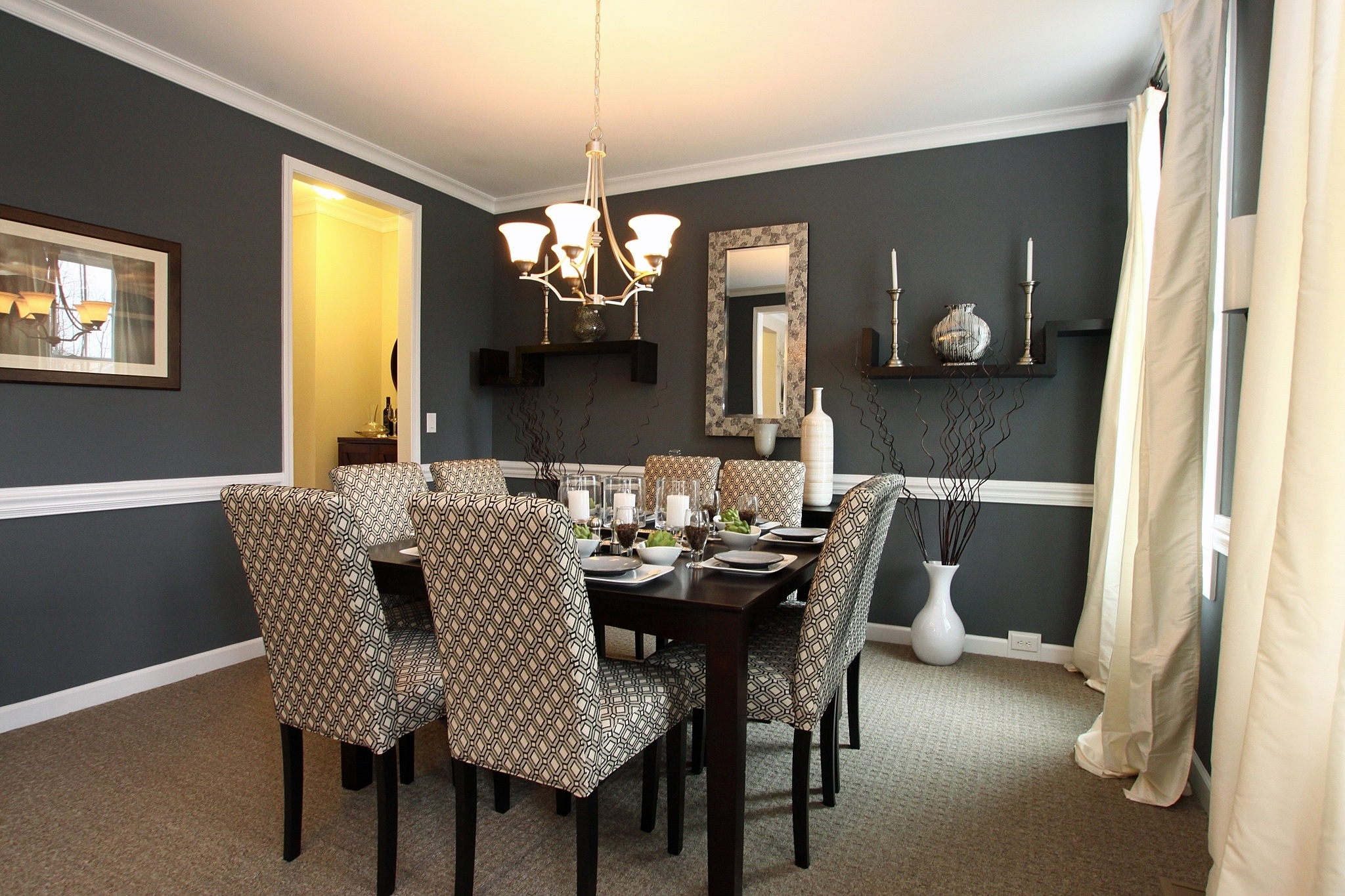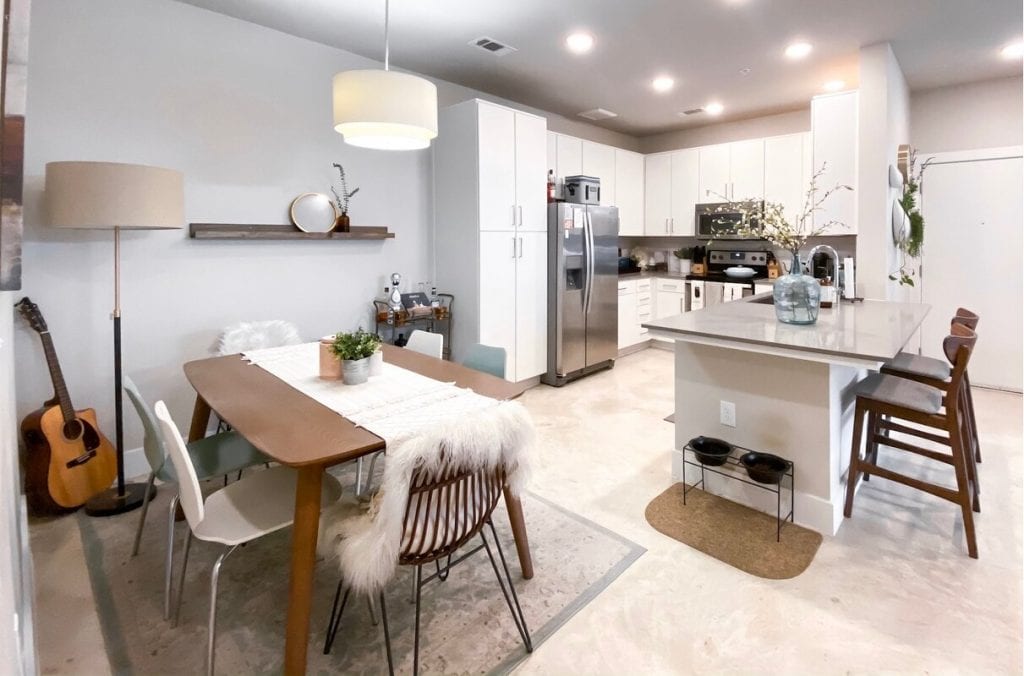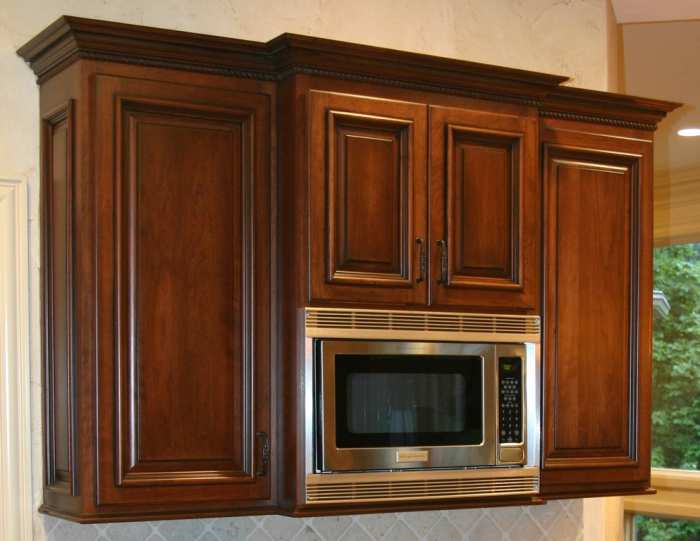If you're looking to create your own house plan, you may be feeling overwhelmed. After all, you want to ensure your dream home is designed and built exactly as you envision it. To make the process simpler, here are 10 tips to keep in mind when crafting your own house plan. 1. Choose Your Style The style of your home – whether it's traditional, bungalow, craftsman, modern, or Art Deco – should be the first item on your list. You'll need ideas to get started, so look online for house plan designs and flip through some home design magazines. Start off your journey by educating yourself about the styles you find appealing. 2. Think of Unique Spaces Make a list of unique features you'd like to include in your house plan. How about a home office, or a reading nook? Think about the spaces and spaces needed for your lifestyle. Does the plan accommodate your hobbies and will it be able to adjust as your needs change over the years? 3. Consider Zoning Requirements The number of bedrooms you create and the type of kitchen or bathroom appliances you choose will depend on the zoning regulations in your city or town. It's crucial to get familiar with local requirements before designing your own house plan. 4. Estimate Building Costs It's essential to have an understanding of how much it will cost to bring your dream house to life. For instance, your house plan might look fabulous on paper, but you'll also want to find an experienced contractor to build it for you. Ask as many questions as you can about the cost of materials and labor. 5. Sketch or Render Your Plan With the help of a blueprint or sketch, you'll be able to outline the basic plan for your house design. Be sure to note the location of doors and windows. Look for the features of the land that you can choose when designing your own house, like a lake or a pond, or an existing wall or tree line. 6. Optimize Room Layout Once you've got the foundation of your house plan in place, you'll need to consider the layout of each room. Think about saving space and think of ways to create traffic movement. Also, plan for the future and design rooms that are expandable. 7. Get Creative with Storage In addition to rooms, make sure to consider how to incorporate pockets of storage in your house design. Consider fold-up furniture, shelving, and multiple-purpose storage solutions. 8. Think About Safety and Security Your design should always include safety and security elements. For instance, you might consider adding a home security system to enhance protection for your family and your possessions. Additionally, consider adding fire extinguishers and smoke alarms to create a safe and secure environment. 9. Optimize Water Usage When designing your own house, you'll want to make sure it's optimized for water usage. This includes incorporating low-flow toilets, faucets, and showers, as well as overflow preventers and rainwater collection systems. 10. Incorporate Green Living The building industry is doing its best to create homeowners help reduce their energy and water consumption. Take advantage of this and consider incorporating green living features into your home design. Keeping these considerations in mind will not only help you save money in the long run but also help you make your dream house a sustainable and eco-friendly one.Creating Your Own House Plan: 10 Tips to Get You Started
Designing your own house plan can be a daunting task. Before you get started, you'll want to have a clear understanding of the basics of house plan design. First, there are several decisions you'll have to make. These decisions include style, features, and other considerations. It's also important to familiarize yourself with zoning requirements and building costs before getting started. Once you've made the necessary decisions, you'll need to create a scratch or a sketch to get started. Be sure to note your room locations, rooms sizes, and other points of interest. Additionally, you'll want to find ways to optimize the use of space while also considering safety and security. Finally, as you create the plan for your dream house, you'll need to consider the environmental impact. Incorporate green living features such as low-flow toilets and faucets to reduce your water consumption and save money in the long run. Taking the time to understand the basics of house plan design will help ensure your final design is as perfect as you imagined it.House Plan Design Basics
Designing your own house is a big undertaking — and it requires a good deal of research, planning, and forethought. It's important to understand the basics in order to craft a plan that best suits your needs and desires. Here are the steps to get you started. 1. Family Needs: Start by looking at the needs of your family and writing down a list. Consider factors such as how many bedrooms and bathrooms you need and take note of what amenities are important to you. 2. Home Design Ideas: Once you know what criteria your house needs to meet, it's time to start researching ideas. Look at online image galleries for inspiration or browse through home-design magazines. 3. Local Zoning: Before you dive into designing your own house, get familiar with the zoning regulations in your area. Find out how many bedrooms and bathrooms your local area allows and what type of appliances are approved. 4. Estimate Building Costs: Next, it's time to get a rough estimate of the costs for the building materials and labor. You'll need to find an experienced contractor to help you create your own house plan at an acceptable cost. 5. Sketch it Out: With a foundation in place — including a basic outline of the home, the location of the door and windows, and the placement of the rooms — it's time to start sketching out a plan for your house. 6. Room Layout: Take a good look at the floor plan to determine if the room layout makes sense. Think of ways to optimize the space and plan for the future by giving yourself some room to expand. 7. Storage Solutions: Don't just focus on the layout of each room, take a moment to think of creative storage solutions. Make sure to consider fold-up furniture, shelving, and multiple-purpose storage solutions. 8. Security Measures: Your own house plan should include safety and security elements. Build in fire extinguishers, smoke alarms, and even consider adding a home security system. 9. Water: It's essential to think of ways to optimize your water usage when designing your own house. Consider adding overflow preventers, rain water catchment systems, and low-flow fixtures. 10. Incorporate Green Living: Make sure to include green living features in your house plan. Incorporate energy-efficient design features that will not only help you save money in the long run but also make your dream home a sustainable and eco-friendly one. How to Design Your Own House: The Basics You Need to Know
Designing your dream house can be an exciting but daunting task. You might have a few ideas for your dream home in mind, but it's not always easy to turn those ideas into reality. Thankfully, there are easy ways to make the process simpler. Here are 7 steps for designing your dream house that will help you make your dream home a reality: 1. Research House Plans: Start by looking at the style of houses that appeal to you. Researching house plans online and browsing through home design magazines will give you a good idea of what you want your house to look like. 2. Determine Your Needs: Think of unique features that best suit your lifestyle. Make a list of the most important features, such as a home office or a reading nook. 3. Familiarize Yourself With Local Zoning: Be sure to become familiar with your city or town's zoning regulations before designing your own house. This will determine the type of bathrooms, number of bedrooms, and type of appliances you may be able to include in your design. 4. Estimate Building Costs: It's essential to understand the cost of materials and labor so you can stay within a reasonable budget. Ask all the questions necessary to get an accurate estimate of the cost of building your dream home. 5. Draw Out the Floor Plan: Use a sketch or blueprint to outline the foundation of your house plan. Be sure to get the locations of each room correct and note any features of the land that may be included in your house design. 6. Optimize Room Layout: Take a look at all the rooms to make sure they are laid out in a way that makes the most sense. Think about traffic flow, optimizing available space, andAllow for Future Growth. 7. Incorporate Eco-Friendly Features: Finally, to make your dream home sustainable, consider incorporating eco-friendly features such as low-flow Plumbing fixtures, energy efficient appliances, and rainwater catchment systems.7 Simple Steps for Designing Your Dream House
Designing a house from scratch can be a challenging task. There is a lot of planning and critical decisions to be made during this process. It's essential that you consider all aspects of designing a house from scratch to ensure your dream home is up to your expectations. 1. Familiarize Yourself: Before getting started on designing a house from scratch, it's important to understand what's involved. Take time to research house plans online and browse through home design magazines to have an understanding of what style and features work best for you. 2. Consider Your Needs: Take into account the needs of your family and make a list of the features you'd like to include in your dream home. Think of unique spaces like a home office, reading nook, or hobby area. 3. Zoning Requirements: Understand the zoning requirements in your area in order to make sure your house design meets local regulations. 4. Plan Building Costs: Get an understanding of the costs associated with building materials and labor. Doing this before you take the plunge into designing a house from scratch will help you stay within a reasonable budget. 5. Sketch Out the Plan: Outline the foundation of your house plan using a blueprint or sketch. Be sure to note the room layout, locations of windows and doors, and the placement of rooms. 6. Optimize Layout: Carefully examine the floor plan and look for ways to optimize the use of available space. Think of traffic flow and keep room for future expansion. 7. Make it Eco-Friendly: Designing a house from scratch is a great opportunity to think about making it energy and water-efficient. Incorporate features such as low-flow fixtures, rainwater collection systems, and energy-efficient appliances. 8. Keep Safety and Security in Mind: Finally, don't forget to consider safety and security when designing a house from scratch. Include fire extinguishers, smoke alarms, and consider adding a home security system to enhance protection.How to Design a House From Scratch: 8 Tips You Can't Live Without
Designing a house is a complex task that requires considerable time, effort, and expertise. It also requires careful consideration of the many decisions that need to be made along the journey. To make the project easier and more enjoyable, here is an 8-step guide to designing a house. 1. Research House Plans: Start by researching house plans online and browsing through home-design magazines to find out what styles appeal to you most. 2. Think of Your Needs: Make a list of the features you'd like to include in your house design. Consider unique spaces like an office, a reading nook, or a hobby area. 3. Local Zoning: Prior to designing a house, you need to get familiar with the zoning requirements in your area. This will determine the number of bedrooms and bathrooms you can include in your design. 4. Estimate Costs: Before taking the plunge, it's crucial to understand the cost of materials and labor. Doing so will help you stay within a reasonable budget. 5. Sketch Out the Plan: Once you're clear with the first four steps, you can start the plan for your new house. Use a sketch or blueprint to outline the foundation for your house, making sure to include locations for each room, windows, and doors. 6. Optimize Room Layout: Examine each room and look for ways to optimize the space. Keep the future in mind and design rooms that can expand. Designing a House? Use This 8-Step Guide for an Easier, More Enjoyable Project
Design Elements for House Plans
 Designing a house plan can be overwhelming, yet immensely satisfying when complete. With the right guidance and selection of elements, you can create a house plan to fit your style and budget. Whether you are looking to create a modern, coastal, or classic-style home, here are some features to consider when designing your own house plan:
Designing a house plan can be overwhelming, yet immensely satisfying when complete. With the right guidance and selection of elements, you can create a house plan to fit your style and budget. Whether you are looking to create a modern, coastal, or classic-style home, here are some features to consider when designing your own house plan:
Size and Layout
 The size of your house plan should reflect the number of occupants and the lifestyle you wish to maintain. Consider the number of bedrooms, bathrooms, and other spaces such as an office or hobby room. Decide how many stories you'd like to include and explore the array of rooflines available to you.
The size of your house plan should reflect the number of occupants and the lifestyle you wish to maintain. Consider the number of bedrooms, bathrooms, and other spaces such as an office or hobby room. Decide how many stories you'd like to include and explore the array of rooflines available to you.
Efficient Floorplans
 You'll want to optimize the layout and flow of your home plan. Pay special attention to how rooms are connected, the flow of movement, and how natural lighting is directed. While also considering reversing the placement of items such as kitchen counters and appliances. With thoughtful design choices, the functions of everyday life will naturally come together.
You'll want to optimize the layout and flow of your home plan. Pay special attention to how rooms are connected, the flow of movement, and how natural lighting is directed. While also considering reversing the placement of items such as kitchen counters and appliances. With thoughtful design choices, the functions of everyday life will naturally come together.
Stylish Exteriors
 The exterior of your house can be just as important as its interior. Exteriors reflect not only the style of the house but the personality of the occupants. Attention to details such as rooflines, shutters, and trim can give your house plan character and add to its overall charm.
The exterior of your house can be just as important as its interior. Exteriors reflect not only the style of the house but the personality of the occupants. Attention to details such as rooflines, shutters, and trim can give your house plan character and add to its overall charm.
Unique Finishes
 Beautiful finishes are the perfect way to give your house plan just the right amount of oomph. A variety of materials can be used to create unique textures and visual elements. This can be done through use of color, patterns, and different types of surfaces. Mixing various textures can add visual interest and create a sense of luxury to your overall interior design.
With these tips, you can begin to formulate a house plan that is both creative and functional. An eye for detail, a well-thought-out plan, and the desire to create a special place to call home are all that are necessary for you to be on your way to creating a very special house plan.
Beautiful finishes are the perfect way to give your house plan just the right amount of oomph. A variety of materials can be used to create unique textures and visual elements. This can be done through use of color, patterns, and different types of surfaces. Mixing various textures can add visual interest and create a sense of luxury to your overall interior design.
With these tips, you can begin to formulate a house plan that is both creative and functional. An eye for detail, a well-thought-out plan, and the desire to create a special place to call home are all that are necessary for you to be on your way to creating a very special house plan.




















































